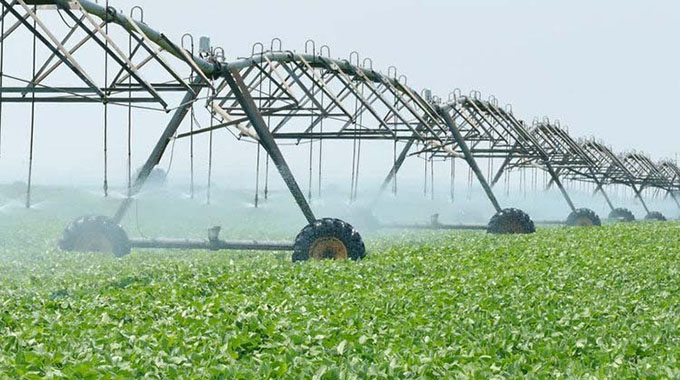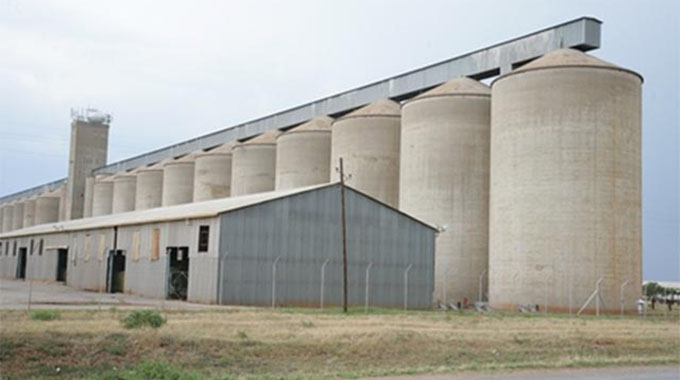Water, water everywhere, but . . .

Lovemore Chikova
Development Dialogue
It has been a season worth celebrating, what with the good rains that have ensured almost every dam in Zimbabwe is filled to capacity, with some spilling.
It is a really huge spectacle, especially after we last had such an experience many years ago, with successive droughts denying us plenty of rains in the last decade.
But amid these celebrations, it should not be forgotten that in times of plenty, there is need to remember the lean days ahead and start preparing for them.
Yes, we have the good rains, yes we have the dams, but what are we doing about ensuring that this plenty of rain is turned into future source of food security?
The answer lies in the development of irrigation schemes, or at least the resuscitation of the existing ones.
With the water that has been harnessed so far in our reservoirs, it is possible for farmers to fight the disarray in agriculture usually witnessed in times of droughts.
The beauty of irrigation is that farmers can grow up to three crops per year, making the country a greenbelt throughout the year.
What this calls for is the adopting of strategies to introduce vibrant irrigation systems to help alleviate, if not obliterate, the effects of climate change.
Reliance on rain-fed agriculture has become unsustainable and can be self-defeating. The earlier we address this, the better, and plenty of rains received this season present a perfect opportunity.
And it is time for the private sector to form partnerships with Government and other agencies to start new irrigation schemes and revive those that are not doing well.
The majority of farmers in Zimbabwe depend on rain-fed agriculture, while a few A2 farmers have installed irrigation facilities on their farms.
Yet the potential for Zimbabwe to move into irrigation with much vigour is massive, mainly because the Government has the will to do that.
The country is already endowed with tracts of arable and fertile land which can be exploited fully to support irrigation schemes.
It is should be unacceptable from now onwards to allow starvation when the country has so many water bodies that are full of water, when the development of irrigation is the answer.
Irrigation feeds well into the New Dispensation’s broad development agenda aiming at attaining Vision 2030 of achieving an upper middle income status.
Through irrigation, there is potential to spearhead an export-led growth, with agricultural products such as flowers, beans, peas in high demand in such lucrative markets as Europe.
It is refreshing to note that Lands, Agriculture, Fisheries, Water and Rural Resettlement Minister Dr Anxious Masuka has been prioritising the establishment of irrigation schemes since his appointment.
Speaking during a recent tour of Insukamini Irrigation Scheme in Lower Gweru last week, Dr Masuka said members of irrigation schemes who fail to use their irrigated land as productive farms will be removed and replaced by those willing and with the capacity to do so.
A Statutory Instrument to support the plan is expected soon, he said.
It is also important that Government has since budgeted $57 million for the rehabilitation of irrigation schemes across the country and wants this expensive infrastructure to be fully used by productive farmers.
But the first port of call should be the modernisation of irrigation through the acquiring of new technologies or at least attract investors who will contribute to the development of irrigation.
Apart from the irrigation schemes, individual farmers should strive to direct their earnings towards equipping their farms with modern irrigation facilities to ensure an increase in their yields.
With the adoption of irrigation by farmers, Zimbabwe can easily achieve food security, and quickly realise the much anticipated turnaround in crop production.
Government should revisit past irrigation development blueprints with a view of improving them by addressing those areas which provided challenges to their success.
From now on, irrigation should be the watch word for the Ministry of Lands to avoid situations where citizens end up looking up to Government for food relief each season.
In fact, Zimbabwe’s agriculture story can change for the better in few seasons with the adoption of vibrant irrigation systems.
It is clear that the future lies in irrigation cropping, and the more farmers wake up to this reality, the more prospects for a food secure Zimbabwe are enhanced.
Tugwi-Mukosi and
Marovanyati dams
Something has to be urgently done at Tugwi-Mukosi Dam in Chivi and Marovanyati Dam in Buhera to ensure that the dams benefit local communities.
These two dams were recently completed and they have a huge capacity to irrigate thousands of hectares between them.
It was a good scene when Tugwi-Mukosi spilled recently, with the event making headlines in the media.
The Zimbabwe National Water Authority chipped in, issuing a statement celebrating how the accumulated waters in Tugwi-Mukosi will re-assure sugarcane farmers in the Lowveld, more than 100 kilometres away.
Well, there is nothing wrong with Tugwi-Mukosi Dam water being channelled to sugarcane growers who in turn produce more sugar, with some for exports.
But communities around the dam should also start benefiting through establishment of irrigation schemes, especially after recent announcement that it has the capacity to irrigate 40 000 hectares.
The long-drawn crafting of a development master plan for Tugwi-Mukosi Dam catchment area should finally come to an end, so that the process is expedited to ensure the reservoir starts benefiting surrounding communities.
Communities that surround the dam have been pinning hopes on the establishment of irrigation schemes in the surrounding areas that would draw water from the dam.
Such hopes have been raised because the area is generally affected by drought, which has resulted in some families relying on food handouts from Government almost every season.
Tugwi-Mukosi Dam can make Masvingo province, and especially Chivi South where it is situated, a green belt through irrigation, with the potential to contribute significantly to national food security.
It remains untenable that villagers watch the water flow from Tugwi-Mukosi Dam to “far away” Chiredzi and Triangle to water cane fields, when they have not started benefiting.
But the longer it takes to develop the development master plan, the more rural communities treat Tugwi-Mukosi as “their” dam and not “our” dam.
At the same time, Marovanyati Dam is Buhera’s crown jewel, as its intended purpose is to provide multi-purpose domestic, agricultural and industrial water supply to the district.
While there are already existing irrigation schemes like Murambinda, there is scope for development of more such facilities to ensure many communities benefit.
It is encouraging that Government is fully aware of this necessity following the commissioning of Marovanyati Dam last year.
Just like Chivi, Buhera has been one of the hardest hit districts in the country by successive droughts.
But the establishment of new irrigation schemes and the resuscitation of others remains vital to improving the livelihoods of ordinary Zimbabweans.









Comments